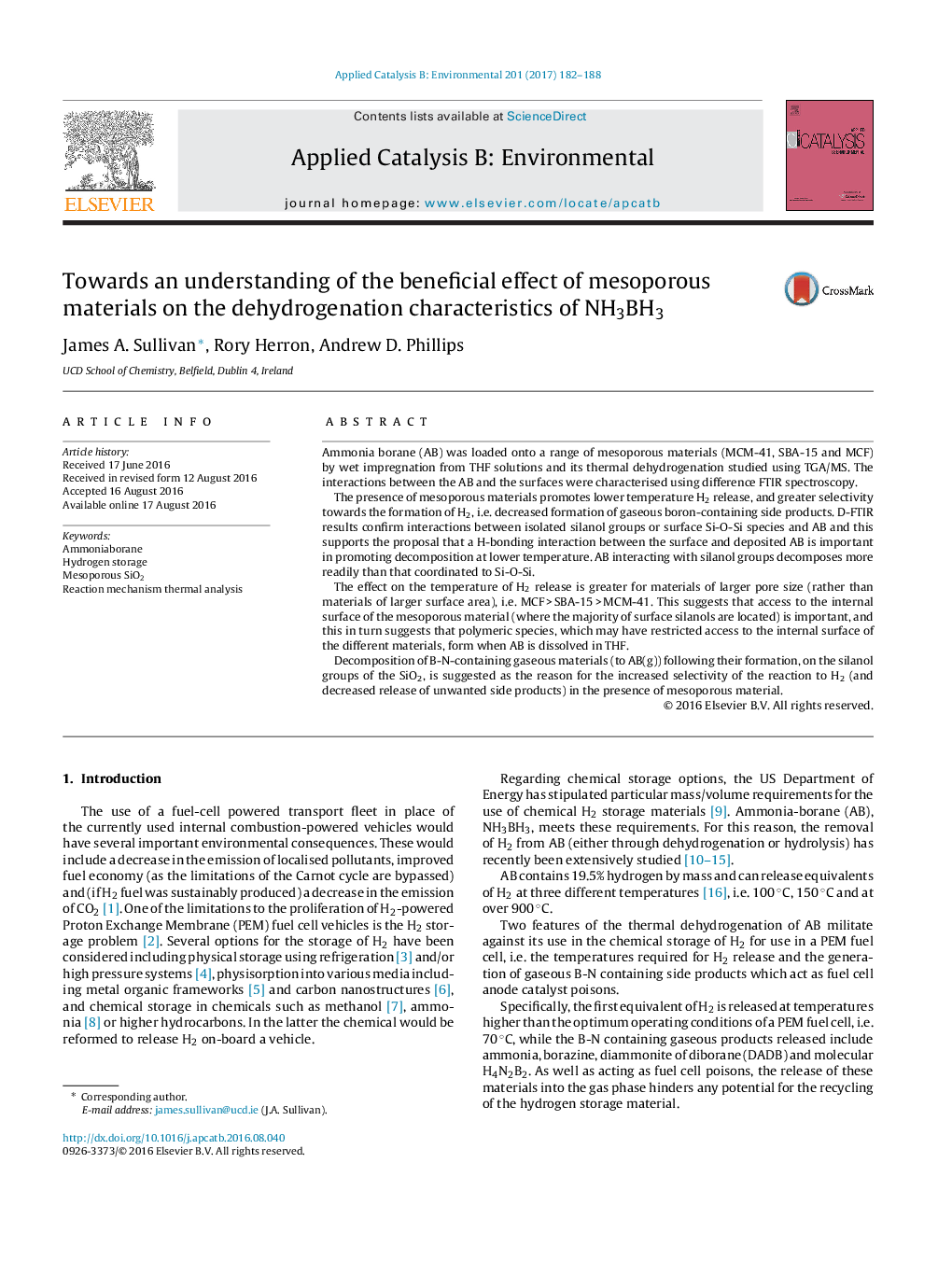| کد مقاله | کد نشریه | سال انتشار | مقاله انگلیسی | نسخه تمام متن |
|---|---|---|---|---|
| 6454981 | 1418819 | 2017 | 7 صفحه PDF | دانلود رایگان |

- Mesoporous SiO2 promotes lower temperature and more selective NH3BH3 dehydrogenation.
- The effect is dependent on pore size-although molecular AB is smaller than MPS pore sizes.
- Surface hydroxyls are important in promoting selectivity.
- Without surface OH groups, an interaction with surface Si-O-Si species improves dehydrogenation.
- These interactions are less beneficial than those between AB: Si-OH groups.
Ammonia borane (AB) was loaded onto a range of mesoporous materials (MCM-41, SBA-15 and MCF) by wet impregnation from THF solutions and its thermal dehydrogenation studied using TGA/MS. The interactions between the AB and the surfaces were characterised using difference FTIR spectroscopy.The presence of mesoporous materials promotes lower temperature H2 release, and greater selectivity towards the formation of H2, i.e. decreased formation of gaseous boron-containing side products. D-FTIR results confirm interactions between isolated silanol groups or surface Si-O-Si species and AB and this supports the proposal that a H-bonding interaction between the surface and deposited AB is important in promoting decomposition at lower temperature. AB interacting with silanol groups decomposes more readily than that coordinated to Si-O-Si.The effect on the temperature of H2 release is greater for materials of larger pore size (rather than materials of larger surface area), i.e. MCFÂ >Â SBA-15Â >Â MCM-41. This suggests that access to the internal surface of the mesoporous material (where the majority of surface silanols are located) is important, and this in turn suggests that polymeric species, which may have restricted access to the internal surface of the different materials, form when AB is dissolved in THF.Decomposition of B-N-containing gaseous materials (to AB(g)) following their formation, on the silanol groups of the SiO2, is suggested as the reason for the increased selectivity of the reaction to H2 (and decreased release of unwanted side products) in the presence of mesoporous material.
102
Journal: Applied Catalysis B: Environmental - Volume 201, February 2017, Pages 182-188